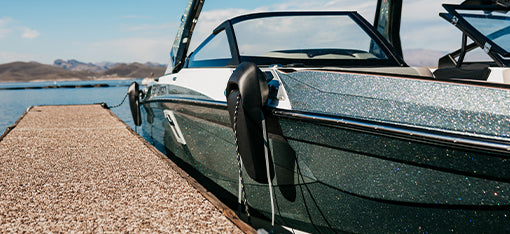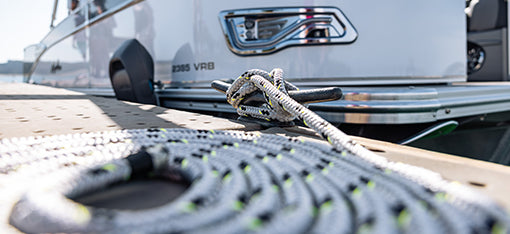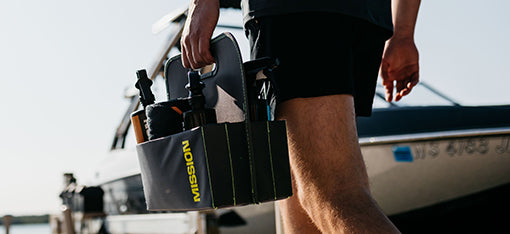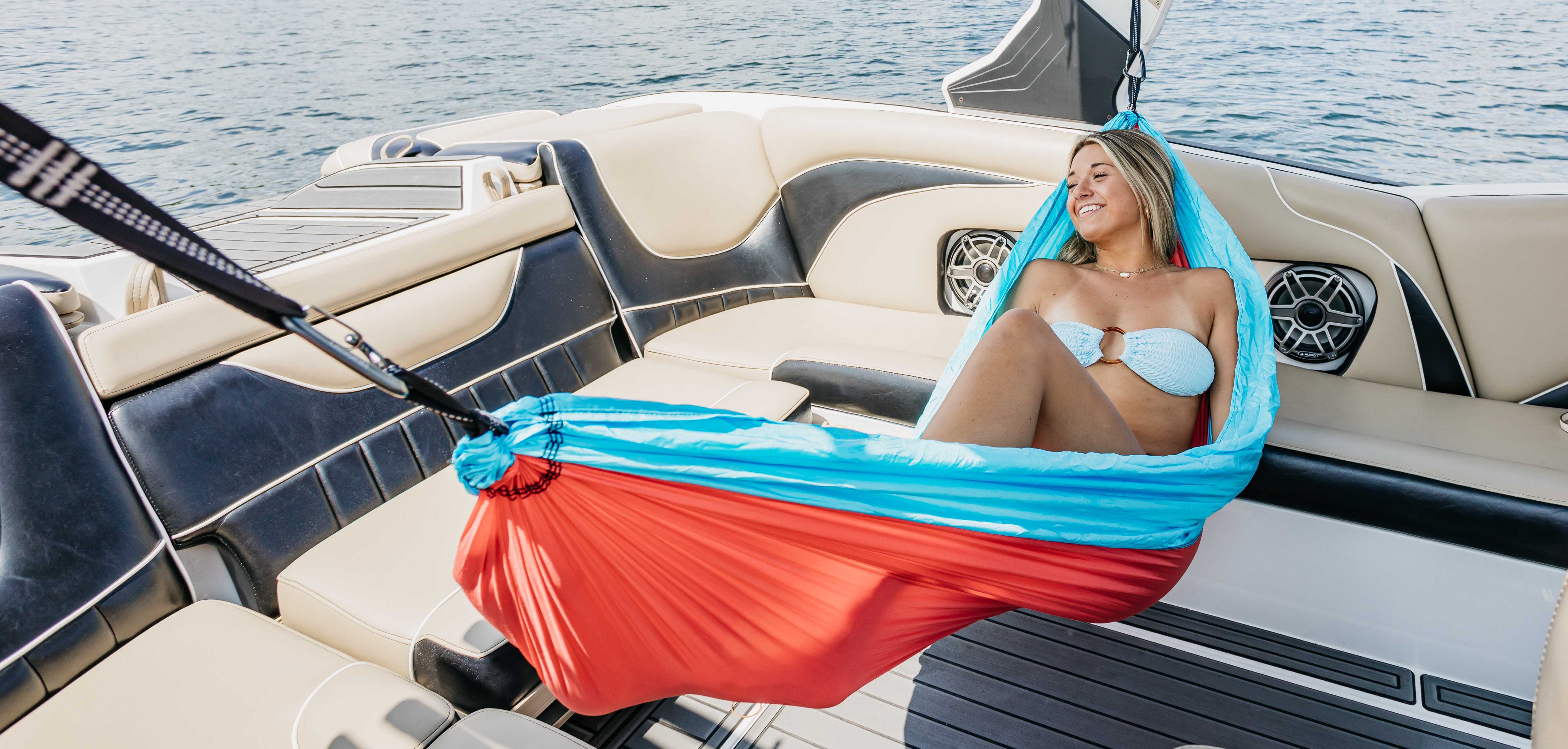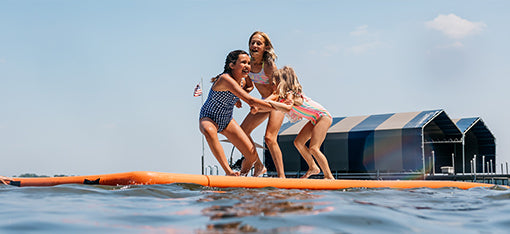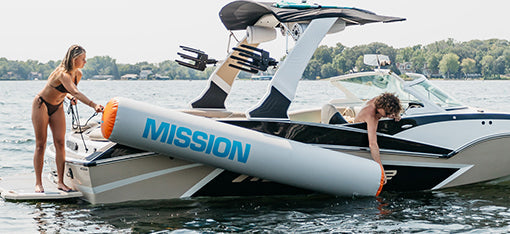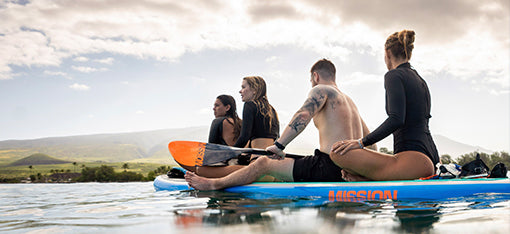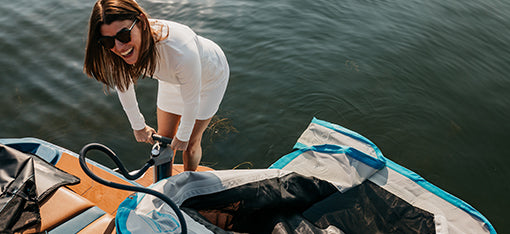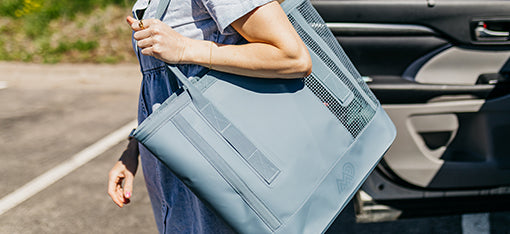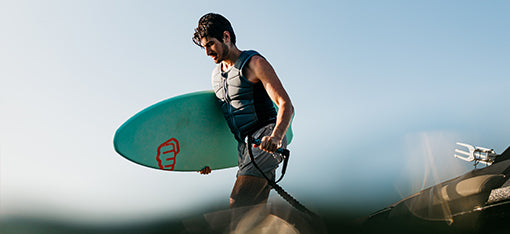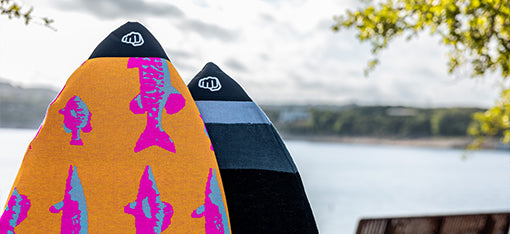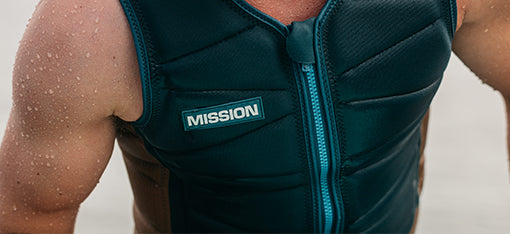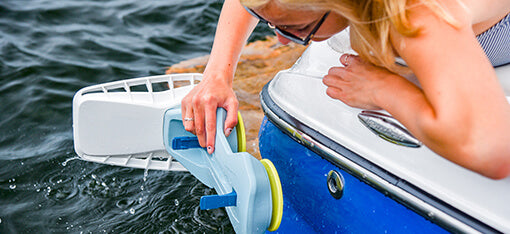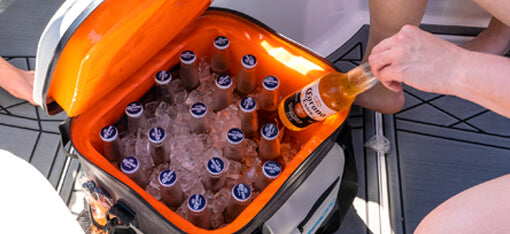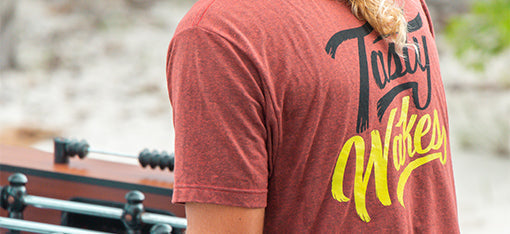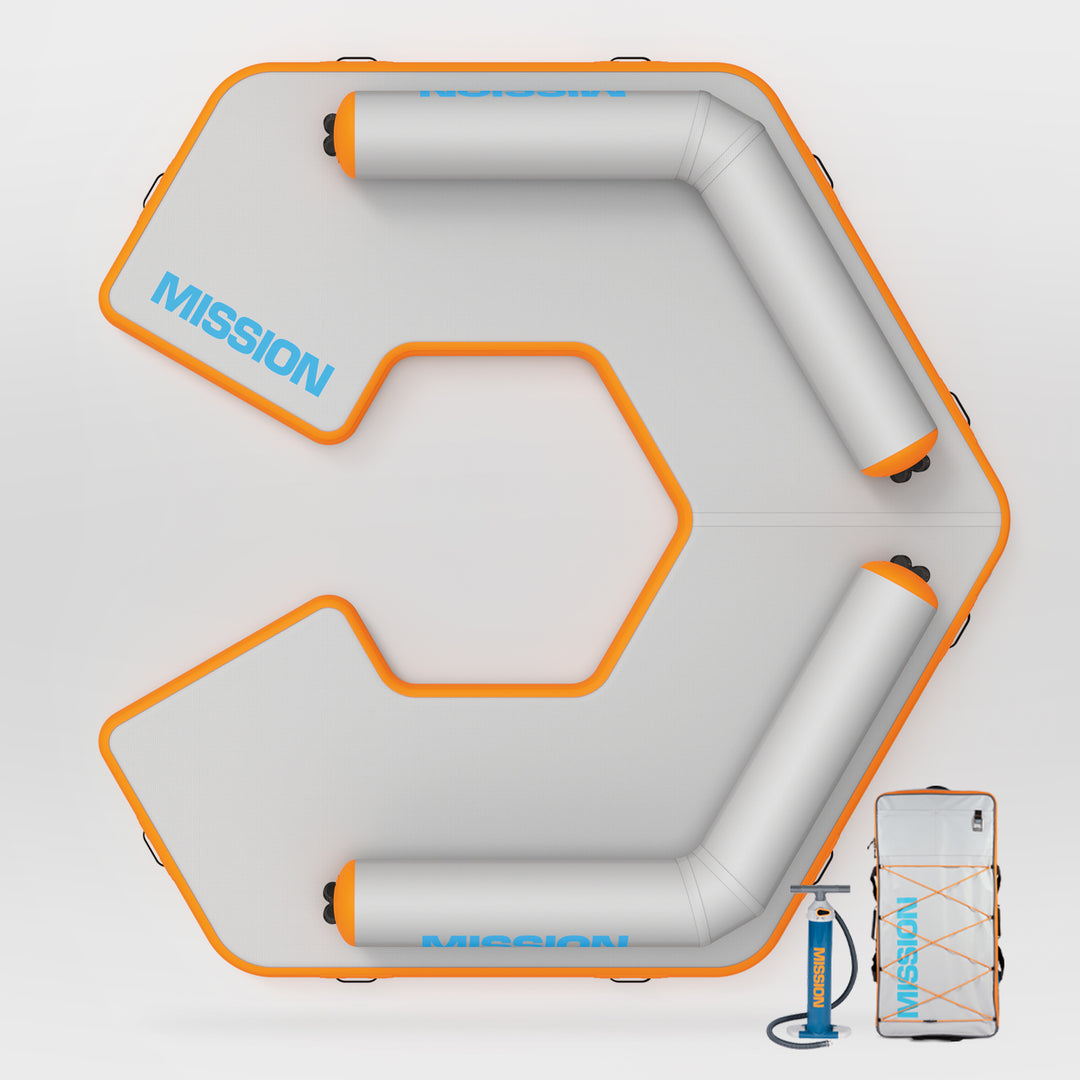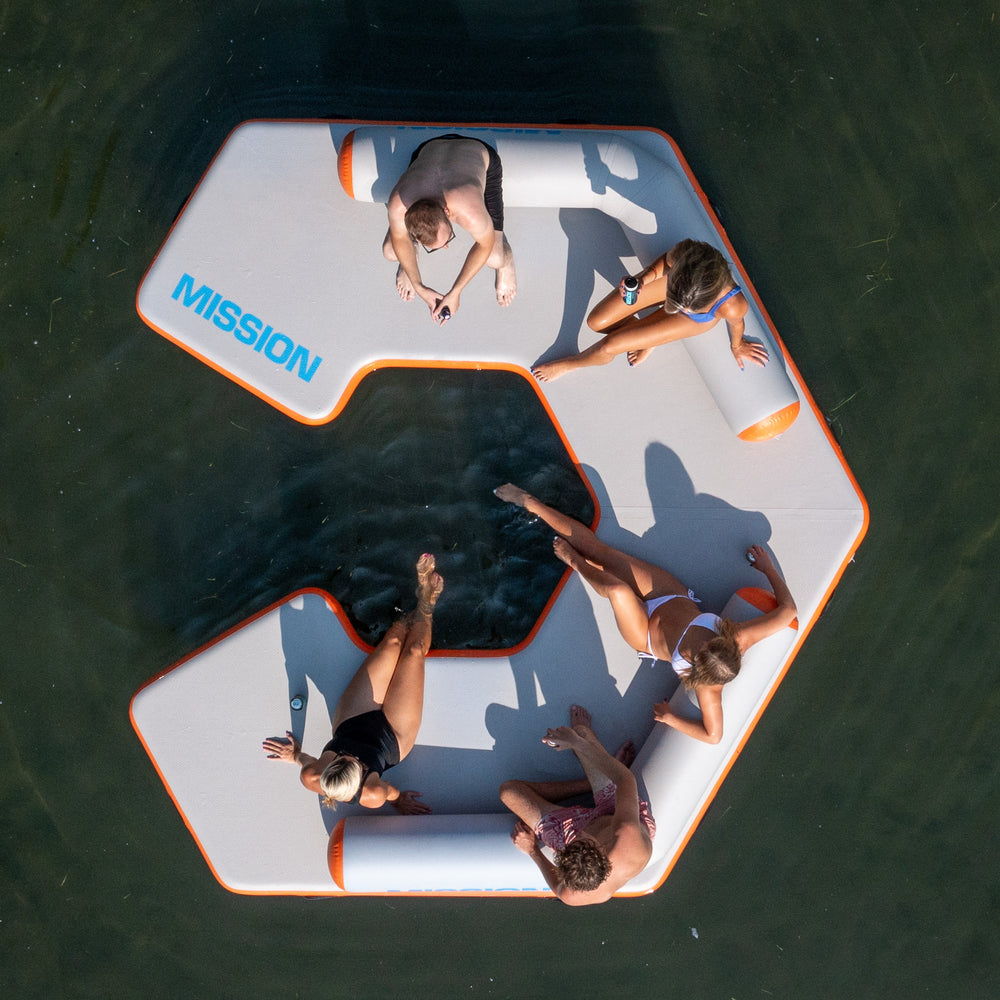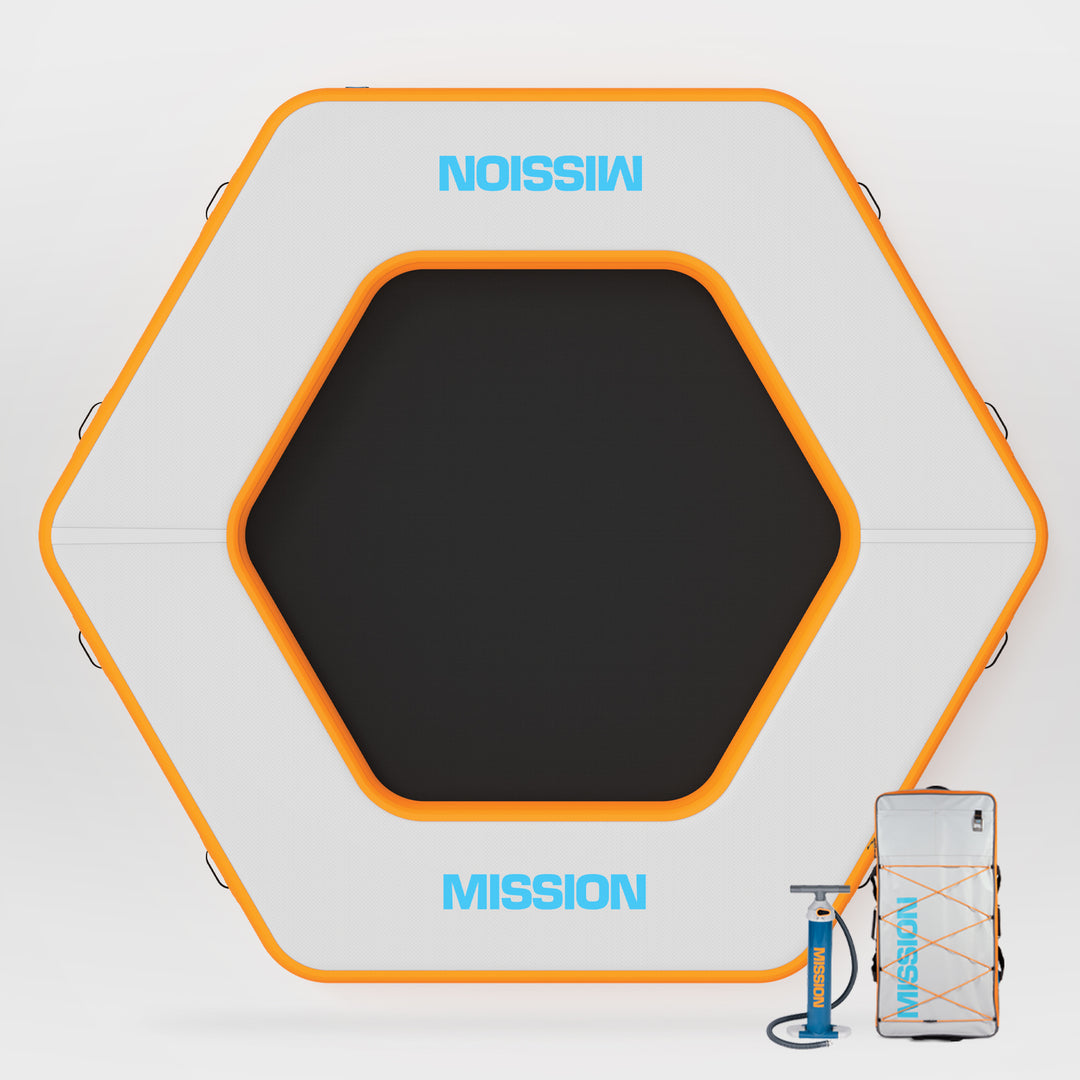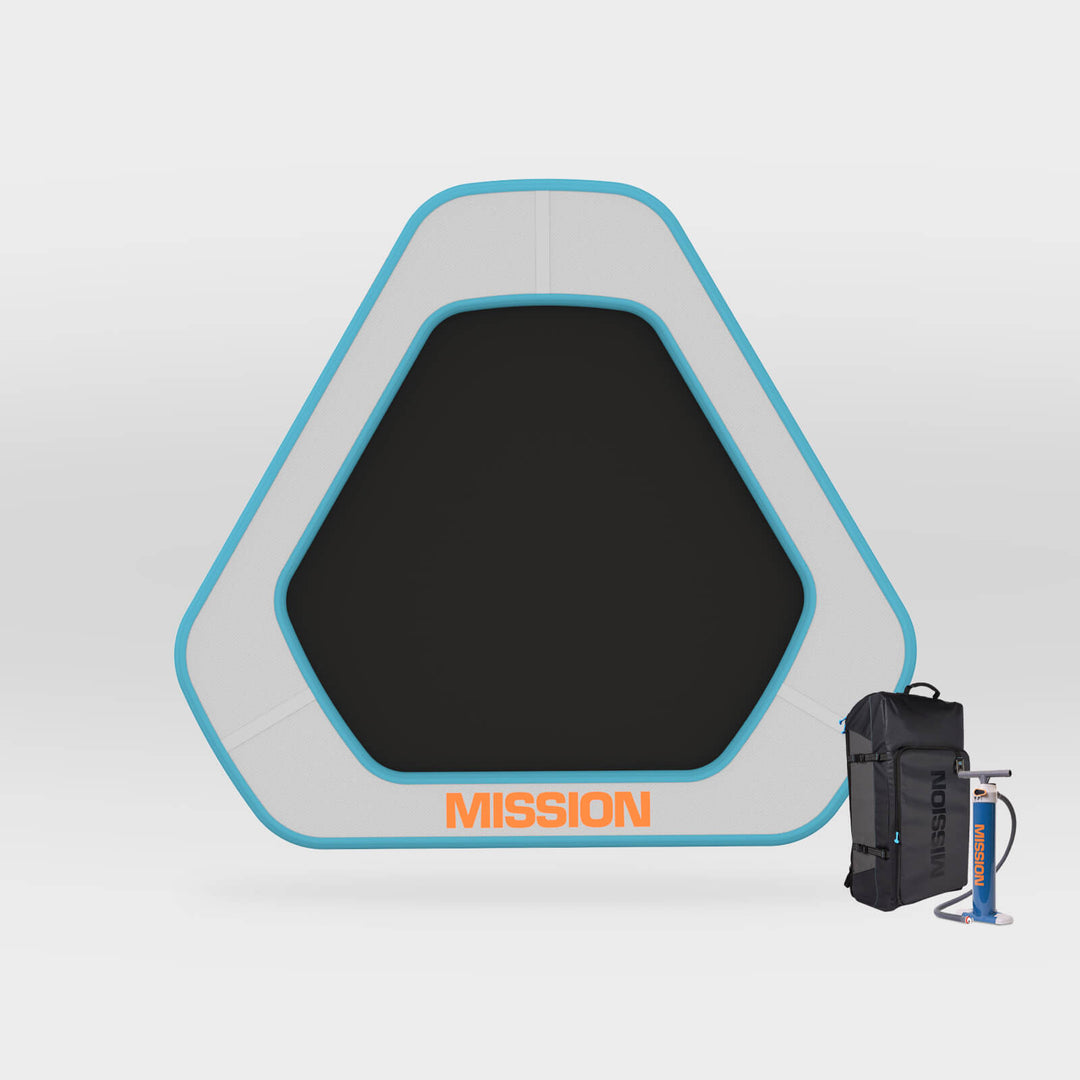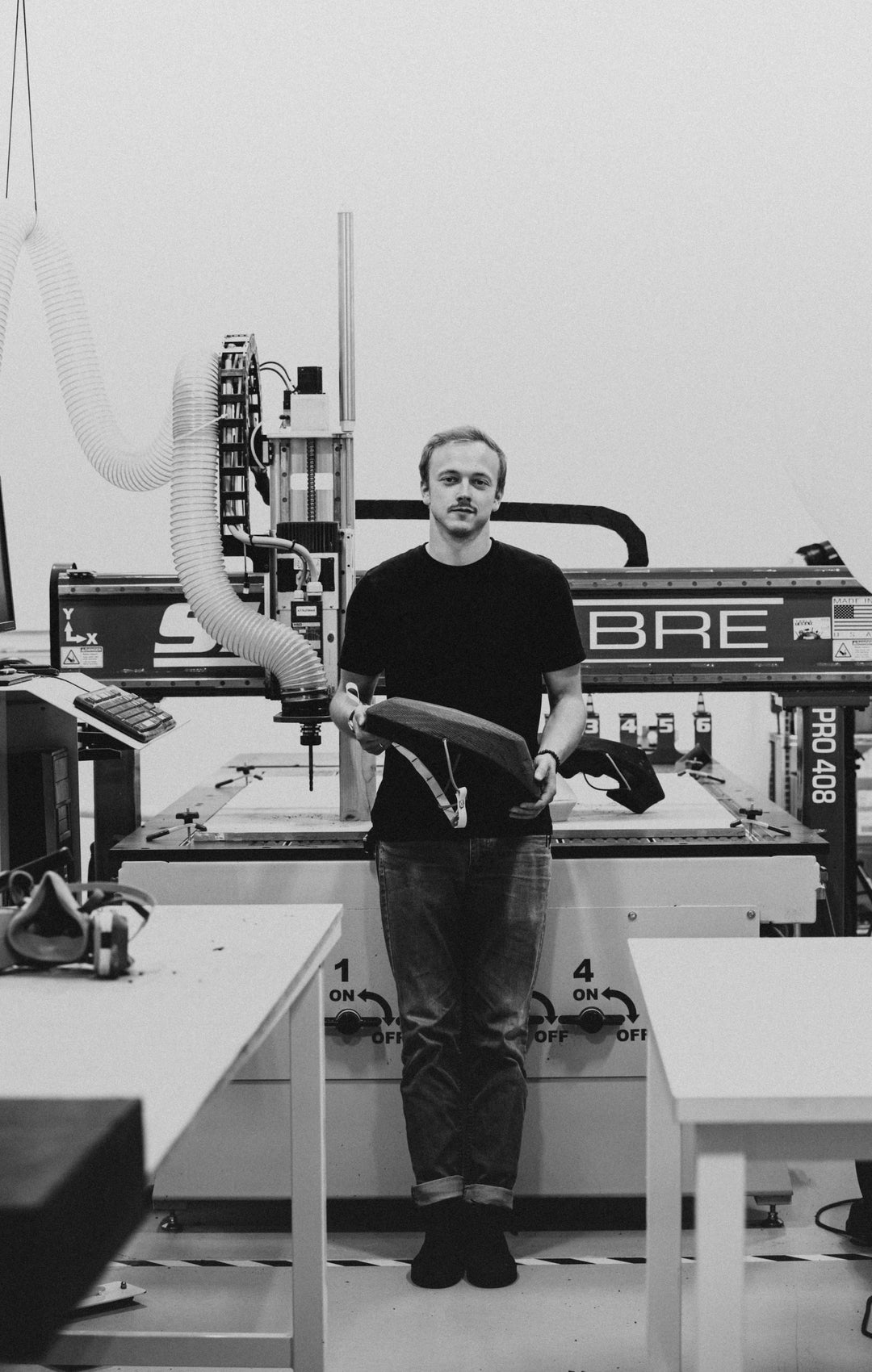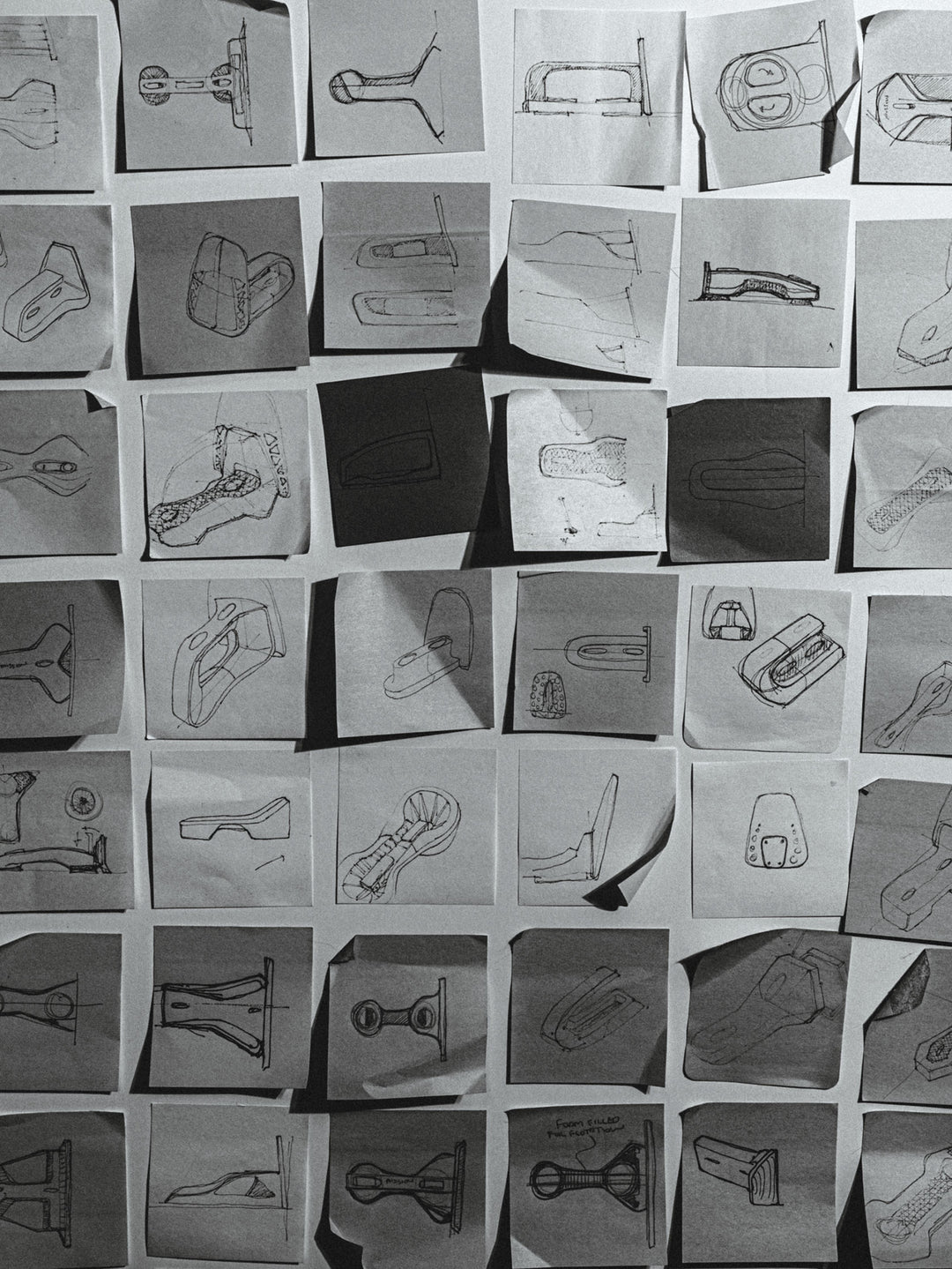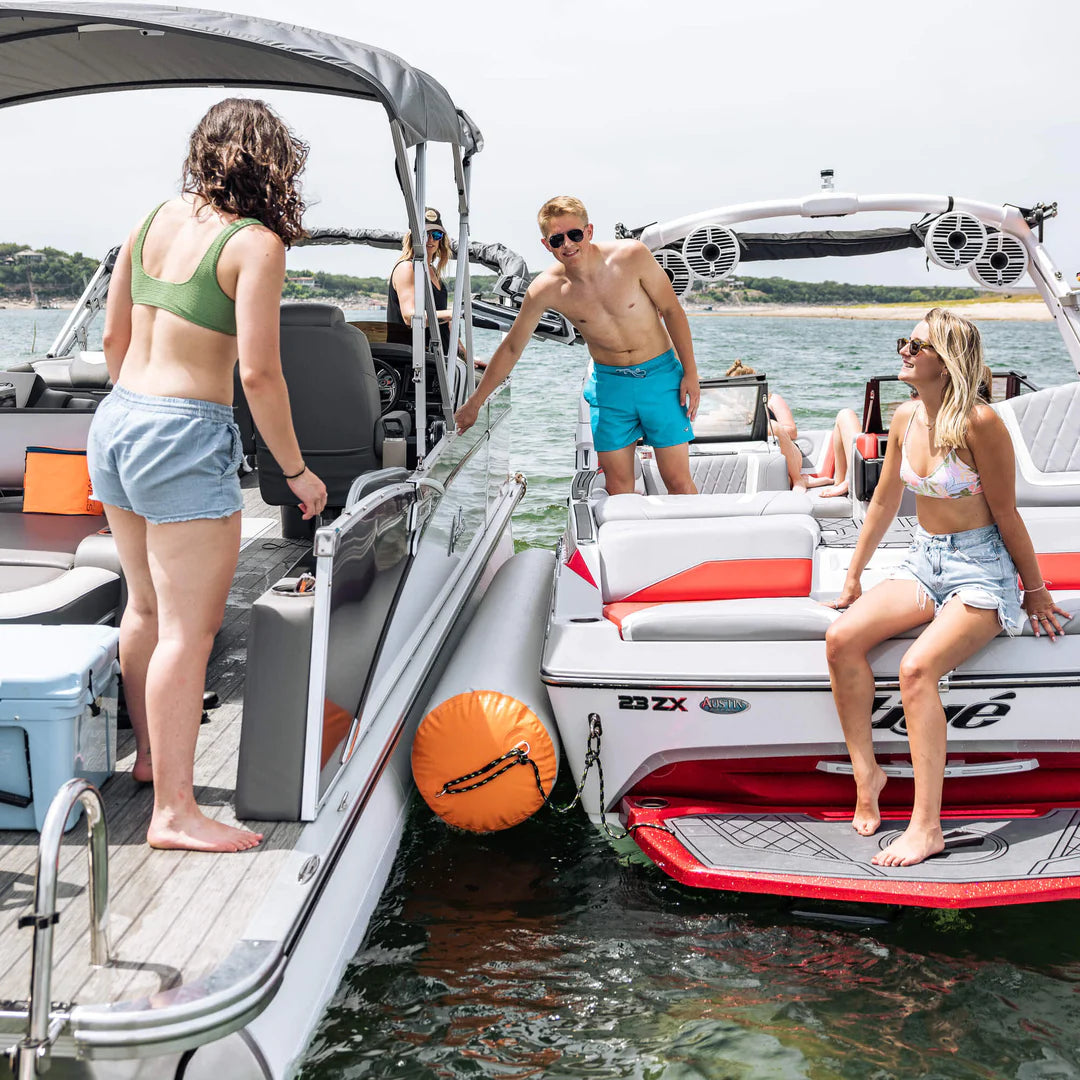What Kind of Wakesurf Board Should You Get? | Consider These Things When Shopping
Choosing a wakesurfing board is like picking out underwear. They can all probably get the job done, but you want to find something that fits your style and your cheeks (OK, that last part might be more specific to underwear).
Regardless of your skill level or riding style, wakesurfing is all about having fun and choosing the right board for your particular brand of fun will help you get up faster and stay up longer.
Some people worship by the boards that are built for cutting, carving, and commanding the wake. Others wouldn’t be caught dead riding anything other than the boards that make it easier to slide, spin, and pull off some gnarly tricks. We’ve even seen a guy rocking a styrofoam cooler lid because he was shredding on a budget. It was a short ride, but it was glorious!
The point is, everyone has an opinion and they’re all right (or wrong if you’re one of those buzzkill, glass-half-empty types.) So what kind of board should you get? Well, let’s talk about what makes boards different and help you find one that fits your style and makes you feel the most comfortable out on the water.
Anatomy of a Wakesurfing Board 101
Grab your notebooks and stop texting - class is in session. Before we dive into the different styles of boards, it’ll probably help to explain some of the different elements that come together to create a wakesurfing board.
Board style
The board’s style is dictated by whether it’s longer and thicker (surf-style) or shorter and thinner (skim-style).
Board rocker
The rocker isn’t exactly a “part” of the board. It’s a way to describe the curve that runs from the board’s tip to tail. A continuous rocker means that there’s a single, consistent curve. This kind of rocker gives you a smoother, faster ride. A staged rocker will have more dramatic changes in the curve. This causes more friction but lifts the board up out of the water, making it easier to pull off tricks.
Board rails
The rail refers to the shape of the board’s sides or “edges.” Their design can help create a smoother, more stable ride or allow the board to be a little more maneuverable. Soft rails are typically thicker and have a rounded shape that gives you a smoother ride. Hard rails are typically thinner and have a tapered shape that “bites” into the wake and makes it easier to pull off tricks.
Board fins
Fins play a major role in determining how your board performs in the water and there’s a lot of variety in the setup you can choose. A single-fin setup will make it easier to perform spins and tricks, but also leave you with a “squirrelly” feeling under your feet. On the other end of the spectrum, a quad-fin setup will help you generate more speed down the wake but make the board more resistant to quick movements.
Wakesurfing Board Styles
Let’s talk about the core differences between the two board styles: Surf-style and skim-style.
Surf-style wakesurf boards
Surf-style boards are, uh, kind of like surfboards (thanks, Captain Obvious). They’re longer, thicker, and have a softer rail that allows for smooth, powerful carving and a more controlled ride. The underside of a standard surf-style board typically has a tri- or quad-fin setup. Some riders would probably add more if they could.
- Good for: Carving and riding the wake.
- Not-so-good for: Advanced tricks.
Check out the MISSION surf-style board BRAVO and our BRAVO board sizing chart.
Skim-style wakesurf boards
Skim-style boards more comparable to wakeboards or skateboards. They’re shorter, thinner, and usually rock a harder rail that makes it easier to pull off tricks. Most riders don’t have more than a single- or twin-fin setup on the belly of their skim-style board, but we’re not here to judge if you do.
- Good for: Tricks and maneuverability.
- Not-so-good for: Carving (they get “squirrely”).
Check out the MISSION skim-style boards:
- ALPHA and ALPHA board sizing chart
- CHARLIE and CHARLIE board sizing chart
- KAPPA and KAPPA board sizing chart
Hybrid boards
OK. We know we said there were only two styles to consider, but we could tell that you were a rebel, so we’re gonna tell you about a third one because we like rebels. Hybrid-style boards are the confused child of a surf- and skim-style board. They blend the characteristics of both boards because they don’t know what they want to be when they grow up. They’re highly customized, Frankenstein-esque creations that sometimes defy wakesurfing logic, but they work for their rider’s unique style and that’s all that matters.
What Determines Wakesurf Board Performance?
Just like surfers, no two boards are the same. Their style, design, and construction will impact how it performs in the water. And so will the rider standing on it. There’s a whole science behind wakesurf board design, but here are a few factors that determine board performance:
Board length
Longer boards can be difficult for smaller or less experienced surfers to control. On the other side of the coin, shorter boards can be a problem for bigger surfers because they don’t have the surface area or buoyancy to keep them up out of the water.
Board construction (materials, design, etc.)
Thicker, carbon fiber boards with foam cores will be more buoyant and give you more control while thinner, bamboo boards will offer more stability.
Wave size
The height and length of your wave will combine to create a wave that might fit one surf style or another. For example, a taller/steeper wave will allow you to surf a short or skim-style board because the wave has more “drive” that propels you forward. If you have a shorter/shallow wave, you’ll need a longer or surf-style board to help generate momentum.
The length of your wave will determine how big of a “pocket” you have to surf. The pocket is where the majority of the wave’s energy is stored and where you’ll want to be for the best surfing experience.
To learn how to change the height and length of your wave, check out our blog about How to Weight Your Boat for Wakesurfing >
Surfer weight
Generally speaking, bigger surfers will need a longer board with more surface area while smaller surfers can afford to shave a few inches of their board length.
Surfer skill
The best surfers in the world can carve a wave on any board. But for beginners and casual surfers, having the right board will be the difference between enjoying your day on the water and spending it as a human fishing bobber.
Video: MISSION Wakesurf Boards Highlight Reel
Thoughts to Think
If you’re just starting out, people might tell you to get a surf-style board because they’re thicker and more buoyant. The logic being that more buoyancy will make it easier to get out of the water. The truth is, bigger doesn’t equal better. Bigger, more buoyant boards can be harder for small or newer riders to control.
Ultimately, we’re all here to have a good time out on the water, so get the board that helps you spend more time smiling and less time playing footsie with the fishies. Give us a shout if you have any questions about which board would be best for you.
See you on the water!




